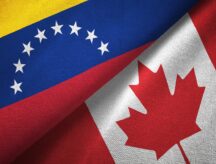How you can move from the U.S. to Canada
The U.S. is one of the top source countries of foreign nationals who move to Canada.
Each year, including over the past year during the coronavirus pandemic, tens of thousands of U.S. residents and citizens move to Canada to immigrate, work, and study. If you are among those in the United States looking to move north, here is an overview of the most popular options.
Immigrating to Canada as a skilled worker
Both the United States and Canada are federal countries, but Canada is different because its provinces and territories are allowed to select immigrants. This explains why Canada has more than 100 different merit-based immigration pathways for foreign nationals who want to immigrate to Canada for economic reasons.
Canada's over 100 economic class streams assess candidates on their human capital factors including age, education, language skills and work experience. While having a valid job offer can help you in the immigration process, the vast majority of successful economic class immigrants arrive to Canada without prearranged employment.
Canada's main pathway for U.S. citizens and residents to immigrate as skilled workers is Express Entry.
Express Entry is the main way that Canada manages skilled worker applications and it is run by the federal department called Immigration, Refugees and Citizenship Canada (IRCC).
Approximately every two weeks, even during the pandemic, IRCC has Express Entry draws inviting candidates to apply for permanent residence. Upon receiving an invite, candidates have a few months to submit their permanent residence application to IRCC.
Get a free Canadian immigration assessment
The Provincial Nominee Program (PNP) is the next common way for economic class immigrants to move to Canada. Almost every province and territory operates the PNP. Each has their own selection criteria which conforms to their jurisdiction's labour market needs. Successful applicants receive a provincial nomination certificate. They then submit the certificate with their permanent residence application to IRCC.
If you are eligible for Express Entry, it may be a good idea to submit an Express Entry profile. While in the Express Entry pool, a province or territory may decide to invite you to apply to their PNP, and this would give you 600 extra points under Express Entry which would pretty much guarantee that you will obtain permanent resident status.
Other options for U.S. citizens and residents include Quebec’s immigration system as well as Canada's federal and provincial options for business immigrants such as self-employed persons.
Get a free Canadian immigration assessment
Moving to Canada with a work permit
Thousands from the U.S. move to Canada as foreign workers.
Work permits in Canada fall under two categories.
The first category involves a Labour Market Impact Assessment (LMIA).
Canada's federal government uses the LMIA to determine how the hiring of foreign workers may impact the wages and employment of workers in Canada. Some job offers require an LMIA, and hence, employers in Canada need to petition the federal government and obtain either a positive or neutral LMIA before bringing the foreign worker in.
The second category does not require an LMIA. Under this category, LMIAs are not required due to Canada's economic and social interests. U.S. citizens, for example, may be eligible for an LMIA-exempt work permit under the former NAFTA, now known as the United States-Canada-Mexico-Agreement (USMCA). U.S. citizens have greater flexibility to work in Canada under the USCMA if they have a job available through their current employer or a new one, or if they are going to engage in substantial investments or trade in Canada.
The Global Talent Stream has become an increasingly popular option in recent years, and tech talent in the U.S., irrespective of their nationality, have been able to benefit from fast-track processing of their Canadian work permits.
It is important to note that coming to Canada as a foreign worker provides an advantage if you wish to immigrate. Many of Canada's economic class immigration streams either provide more points or are designed for foreign nationals who have Canadian work experience. For instance, you can gain more points under Express Entry for your local experience.
Immigrating to Canada under the family class
Canada's second leading immigration category is the family class. The largest group of family class immigrants are spouses and partners of Canadian citizens and permanent residents. In addition, Canada allows its citizens and permanent residents to sponsor their dependent children and parents and grandparents.
Looking for family sponsorship help? Complete a contact form for legal advice.
Becoming a Canadian citizen
U.S.-born citizens and residents with a Canadian parent are eligible to automatically qualify for Canadian citizenship.
They need to submit a “Proof of Citizenship” application to IRCC.
Canada also offers one of the world's most accessible paths to citizenship. Upon gaining permanent residence, you can be eligible for Canadian citizenship after living in Canada for at least three years (1,095 days) in the last five years. About 85 per cent of Canada's immigrants go on to become citizens.
Are you looking to submit a Proof of Citizenship application? Contact a lawyer for assistance.
© CIC News All Rights Reserved. Visit CanadaVisa.com to discover your Canadian immigration options.
- Do you need Canadian immigration assistance? Contact the Contact Cohen Immigration Law firm by completing our form
- Send us your feedback or your non-legal assistance questions by emailing us at media@canadavisa.com







